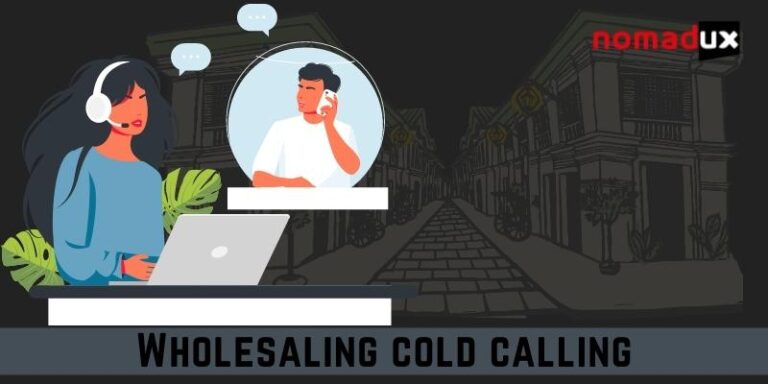Cold calling vs warm calling: How do they differ?
Are you interested in learning which calling technique is most successful? You might have pondered what “warm calling” or “cold calling” meant when you first heard these sales terms. Both cold calling & warm calling are techniques for telemarketing used to get in touch with potential consumers over the phone in order to close a deal. For a company or business, knowing when and how to make these calls could increase revenue. This article compares and contrasts wholesaling cold calling and warm calling, & explains when to use each, offers advice on making the calls, and provides examples of both types of calls.
What is a cold call?
Employees who work for a company that engages in wholesale cold calling make unsolicited calls to potential clients to sell them a good or service. Salespeople typically obtain leads on potential clients from other businesses, email subscriber lists, networking & other referral sources. Due to the recipient’s frequent unfamiliarity with the business or product, cold calling is frequently regarded as more difficult than warm calling since the focus of a warm call has previously shown some interest.
When should you do a cold call?
You might want to take a few steps to make sure you’re well-prepared before making a cold call. Once you have a lead on a consumer and have written & practiced your cold call script, you are ready to make a call. You can construct responses to any arguments or reluctance you foresee from the target consumer using a script to help you organize your thoughts. It may be more effective to consistently prepare for each cold call, and once you have gathered some call data, you may tweak your research strategies or your script as necessary.
Read More: How to Use Cold Calling for Your Business?
Tips for making cold calls
The following advice can be taken into account when you go for Wholesaling cold calling:
- Describe its importance
- Be patient
- Call at the appropriate hour
- Keep the potential consumer on the line
- Present resources
What is a warm call?
Warm calling is also referred to as a hot calling. It is a telemarketing technique in which salespeople contact potential customers who have already shown an interest in the company, service, or product or who are otherwise likely to make a purchase. Given that the target consumer is already aware of the business and a transaction may be possible, warm calling is typically regarded as less difficult than cold calling.
The best time to make a warm call
Like with a cold call, you should get ready for a warm call as well. Researching and creating scripts with phrases and questions can be beneficial. When planning for a warm contact, however, as opposed to a cold call, you might be able to draw on the target customer’s prior experiences with your business, if that is a survey answer, a sign-up for a mailing list, or a former minor purchase. Prior to making your friendly call, having this knowledge might help you tailor it to the person.
Tips for making warm calls
Consider these suggestions as you get ready to conduct a warm call:
- Continue to pay attention to the client
- Sync up your marketing tactics
- Learn to listen actively
- Raise open-ended inquiries
How Do Cold Calls Differ From Warm Calls?
Whether a potential customer has already expressed interest in your service or product is what distinguishes a cold call from a warm call.
You can reach out to someone who has never heard of your business by making a cold call. You make a nice call to someone who has already engaged with your company in some way.
These are, of course, only the simplest definitions. Let’s delve a little deeper to discover what they actually imply.
Real estate investors can use a wholesaling cold calling script to get in touch with a wide range of targeted prospects, including real estate officials, inherited property owners & many more.
What Is More Effective: Cold Calls or Warm Calls?
Warm calls consistently outperformed cold calls in a gunfight.
When your potential customers know a little about the business or person calling, they are more likely to pick up the phone. Additionally, warm prospects are more willing to discuss their issues and listen to potential solutions.
You will need a solid script, consistent practice, and application to be successful at wholesaling cold calling
However, it would be incorrect to draw a direct comparison between cold calls and warm calls. They fulfill two distinct functions.
Which has a better outcome: cold calling or warm calling?
The goal of the majority of cold calls is usually to overcome the first obstacles and schedule a subsequent call or meeting. They assist you in connecting with potential clients who evade your inbound marketing efforts.
Cold calling is an efficient approach to getting your feet in the door when done correctly. Eighty-two percent of buyers frequently schedule a meeting after receiving a cold call.
Conclusion:
Making cold calls is not entirely a waste of time. It has always been & always will be an element of a company’s sales outreach strategy, despite being difficult and less rewarding. However, you must concentrate on finding strategies to turn cold calls into warm leads for your company.
Hot calling needs a greater time and financial commitment. But if done properly, it can have a significant long-term payoff. Customers always come first, as they say! Finding the ideal ratio of hot and cold calling is essential if you want to attract new clients and maintain long-term relationships with them.
Are you looking for top-notch marketing strategies? So, stop waiting now. Nomadux is here to assist you. We have a sizable number of seasoned agents in our database who consistently bring success to their clients. If you require assistance, please contact us at 9044144625. You can send an email to info@nomadux.comas well.







